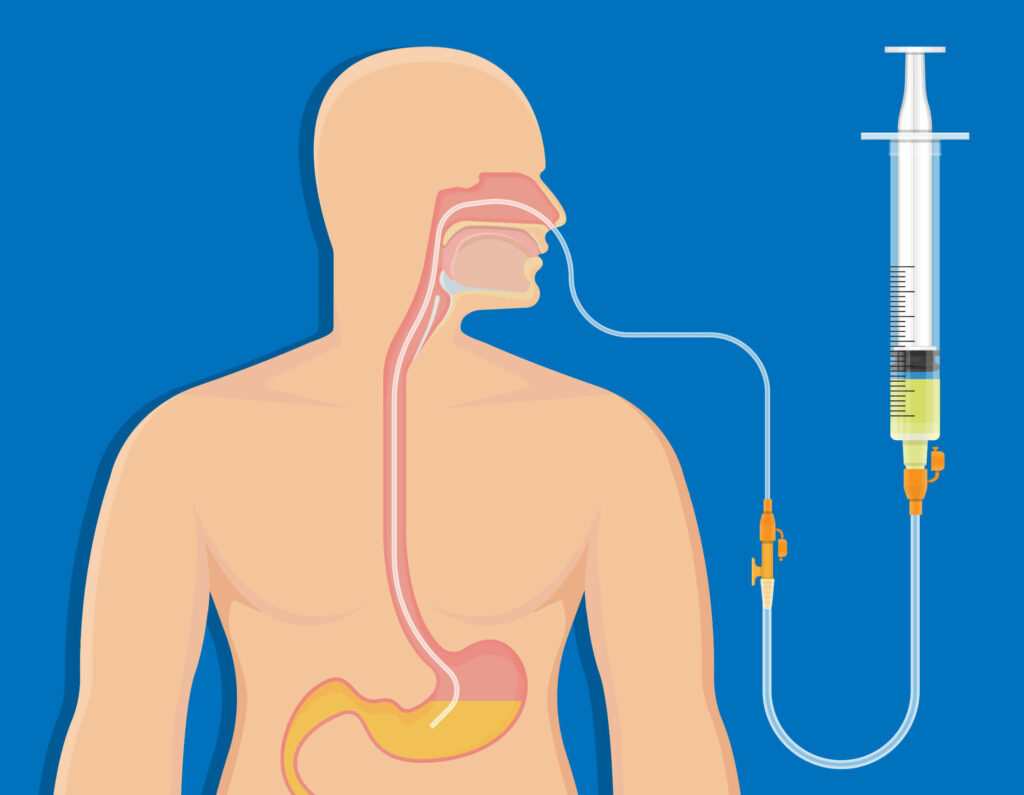
Ingenza’s novel ester-impregnated pH strips significantly improve the accuracy of locating nasogastric (NG) feeding tubes in a study carried out in 10 NHS hospitals, as published in Diagnostic and Prognostic Research.1 The peer-reviewed paper found the innovative test to be 21 per cent more sensitive than the standard NHS pH test in indicating correct stomach placement of the tube, significantly reducing the need for, and high costs associated with, confirmatory X-rays.
NG tubes are used worldwide as a means to provide enteral nutrition, and testing the pH of tube aspirates is commonly used to verify correct tube location. In the NHS, a pH reading of 5.5 or lower – indicating presence of gastric hydrochloric acid – is taken as evidence for stomach intubation. However, standard pH strips lack sensitivity, especially in patients receiving feeding and antacids medication, failing to provide correct verification of tube insertion or migration. Consequently, large numbers of confirmatory X-rays – which is considered the gold standard verification method for tube placement, despite also being subject to misinterpretation – are routinely carried out.
Ingenza has developed a novel pH strip to help improve the diagnostic accuracy of bedside testing and reduce the risk of NG tube misplacements. This groundbreaking, dual-marker test uses a modified pH paper impregnated with an ester substrate that is hydrolysed in the presence of human gastric lipase (HGL) – an enzyme unique to the stomach, and almost invariably present in gastric aspirates – augmenting the acidity detected by the test paper to offer enhanced sensitivity.
Ingenza teamed up with clinical scientists at Imperial College London to validate this test in a highly successful pilot study, correctly indicating gastric placement of NG tubes more often than standard NHS-approved tests. As the study progressed, it was expanded to 10 NHS sites across the UK, where it was found to consistently outperform standard pH strips, increasing the accuracy of NG tube placements. Modelling conducted by Imperial College London showed the novel test could potentially avoid 132 unnecessary chest X-rays per 1,000 patient checks, equating to estimated cost savings of up to £4,034 per 1,000 patients for NHS hospitals. The simple yet highly cost-effective diagnostic test therefore has the potential to improve patient care, as well as protect vital NHS resources, and Ingenza is now in the process of accelerating it towards commercialisation.
- Ni, M., Adam, M.E., Akbar, F. et al. Development and validation of ester impregnated pH strips for locating nasogastric feeding tubes in the stomach—a multicentre prospective diagnostic performance study. Diagn Progn Res 5, 22 (2021). https://doi.org/10.1186/s41512-021-00111-9 ↩︎